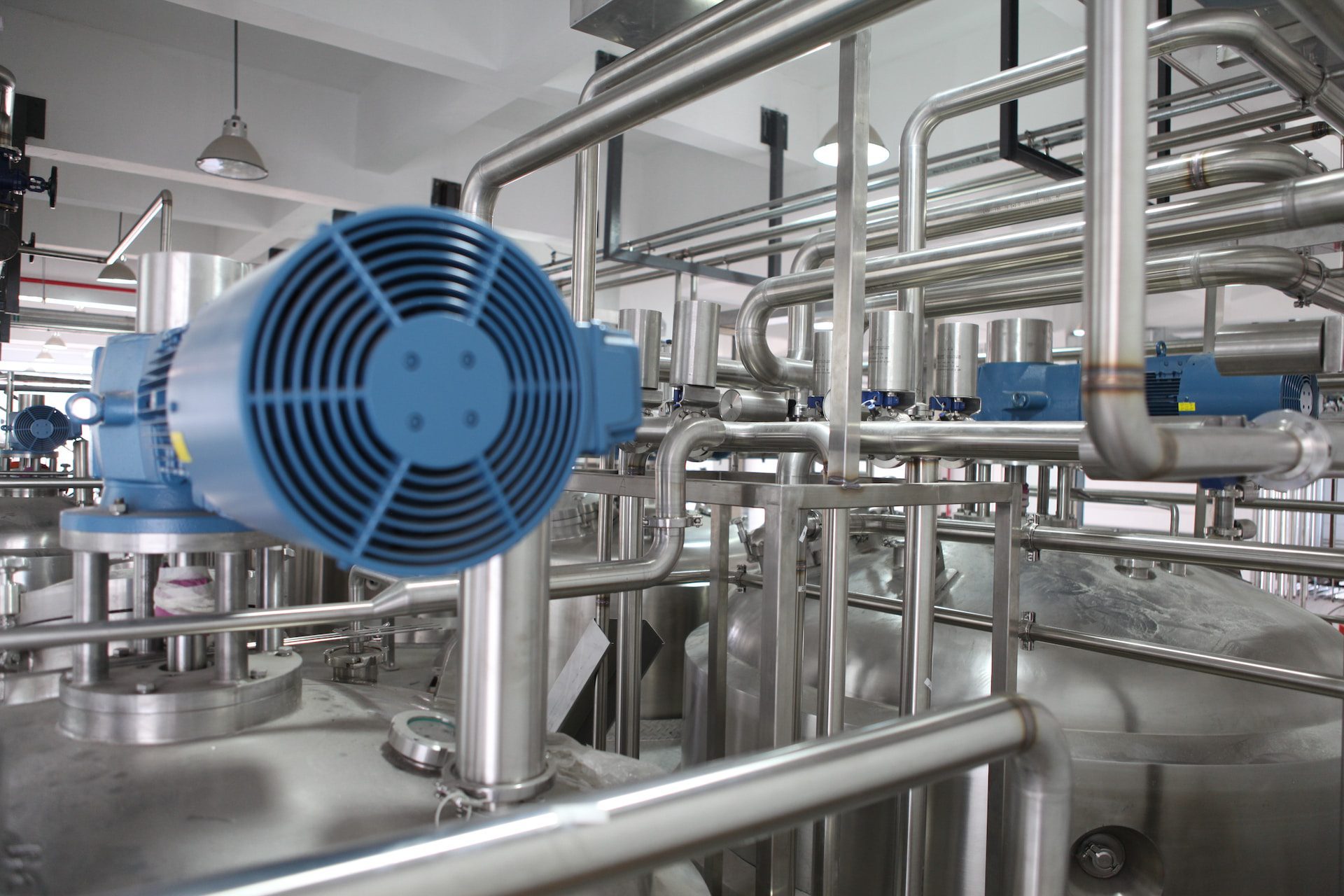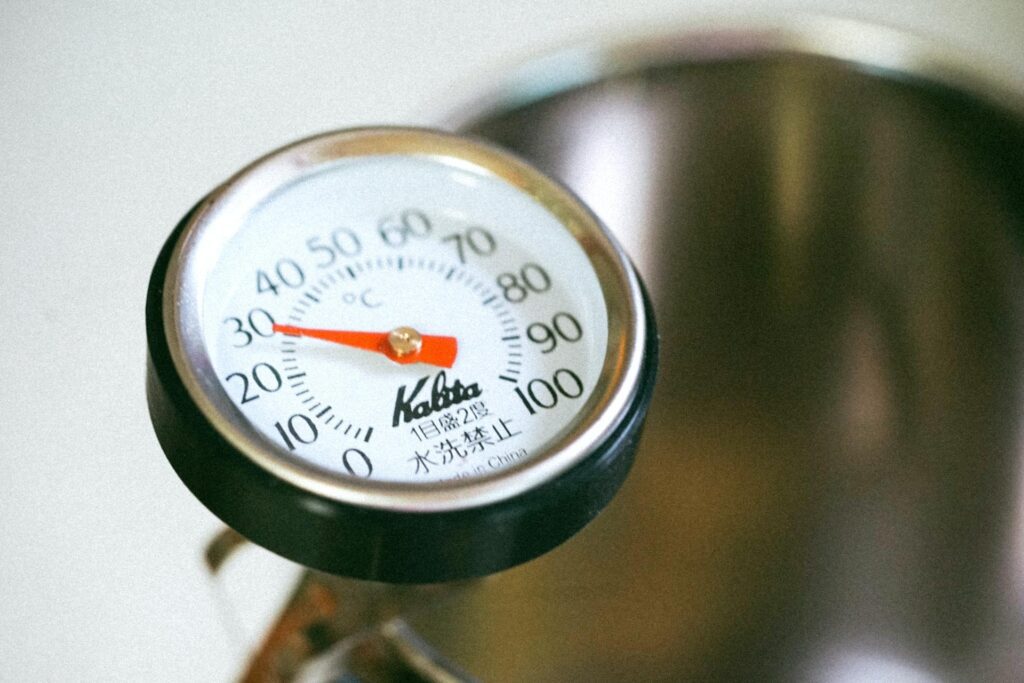12/18/2023 | Conductivity | 20 MINUTE READ
Mastering Heat Exchanger Optimization for Sustainable Industrial Processes

In the vast landscape of industrial processes, the role of heat exchangers stands as a linchpin, facilitating thermal energy transfer to power essential operations across diverse sectors. As integral components of intricate systems, heat exchangers play a pivotal role in enhancing efficiency, reducing costs, and mitigating environmental impact. This introduction seeks to illuminate the critical importance of these thermal workhorses, underscoring the broader significance of energy efficiency in our modern industrial landscape.
Heat exchangers are the unsung heroes behind the scenes, silently ensuring the smooth flow of thermal energy in applications ranging from power generation and chemical processing to HVAC systems. Their ability to transfer heat between fluids while maintaining separation makes them indispensable in numerous industrial settings.
Consider a power plant where steam turbines generate electricity. Here, heat exchangers facilitate heat transfer from the combustion process to water, producing steam that drives turbines. Similarly, precise temperature control is achieved in chemical manufacturing through intricately designed heat exchangers, optimizing reaction rates and product quality.
Beyond their role in individual processes, the collective impact of energy-efficient heat exchangers reverberates across industries, contributing to substantial cost savings and environmental sustainability. As global concerns about climate change escalate, reducing energy consumption becomes a paramount objective.
By maximizing energy transfer efficiency, heat exchangers enable industries to achieve optimal performance with minimized resource utilization. This translates to direct cost savings and aligns with the imperative to curtail greenhouse gas emissions associated with excessive energy consumption.
In the subsequent sections, we delve into the intricacies of proper heat exchanger sizing, fluid flow management, thermal design considerations, and a spectrum of strategies aimed at optimizing performance and ensuring longevity through meticulous maintenance practices. The journey toward enhanced energy efficiency and sustainability begins with understanding the nuanced interplay of factors that govern heat exchanger functionality.

Proper Sizing and Selection
Heat exchangers are versatile instruments of various types, each tailored for specific applications. The efficiency and effectiveness of these devices hinge significantly on proper sizing and meticulous selection. This section explores the diverse types of heat exchangers and the critical considerations in sizing them appropriately.
- Shell-and-Tube: This classic design features tubes housed within a giant shell, allowing for efficient heat transfer between fluids. Commonly used in industries such as oil refining and chemical processing, shell-and-tube exchangers offer robust performance and adaptability to a wide range of applications.
- Plate: Compact and efficient plate heat exchangers consist of stacked plates with fluid channels for heat exchange. Widely employed in HVAC systems and food processing, their modular design facilitates easy scalability and maintenance.
- Finned Tube: Finned tube exchangers augment heat transfer by incorporating extended surfaces (fins) on the tubes. This design is prevalent in air-cooled heat exchangers, finding applications in refrigeration and aerospace industries where space constraints or ambient conditions demand specialized solutions.
Sizing Considerations
- Matching Heat Load and Fluid Flow Rates: The cornerstone of heat exchanger sizing lies in precisely matching the heat load requirements of the process with the capacity of the selected exchanger. Fluid flow rates, temperatures, and the specific heat characteristics of the fluids involved must align for optimal performance.
- Avoiding Oversizing and Undersizing Issues: Oversized heat exchangers lead to wasted energy and increased costs, as the system operates below its optimal capacity. Conversely, undersized units need help to meet the required heat transfer demands, resulting in compromised efficiency. Striking the right balance through careful sizing is imperative for achieving peak performance.
Sizing considerations extend beyond mere dimensions; factors such as fouling tendencies, pressure drops, and material compatibility influence the selection process. The following section delves into the intricacies of fluid flow management, shedding light on its pivotal role in maintaining heat exchanger efficiency.
Fluid Flow Management
Ensuring optimal fluid flow within a heat exchanger system is a critical aspect that directly influences its efficiency and performance. From achieving uniform distribution to optimizing flow velocities, fluid flow management is pivotal in maximizing heat transfer effectiveness and preventing operational challenges.
Efficient heat exchange relies on uniform fluid distribution across the heat exchanger surfaces. Deviations from an evenly distributed flow can result in hotspots or areas with limited heat transfer, diminishing overall efficiency. Achieving proper flow distribution necessitates thoughtful design considerations and, in some cases, the incorporation of distribution enhancement devices.

Optimization of Flow Velocities:
Maintaining optimal flow velocities is instrumental in preventing fouling – accumulating deposits on heat transfer surfaces. In many instances, lower flow velocities can lead to sedimentation, reducing heat transfer efficiency and increasing the likelihood of system downtime for maintenance.
Conversely, excessively high flow velocities may contribute to erosion and increased pressure drop, negatively impacting the heat exchanger’s lifespan. Striking the right balance is crucial for promoting efficient heat transfer while mitigating the adverse effects of extremes in fluid velocities.
Understanding the fluid dynamics within the heat exchanger is essential. Computational fluid dynamics (CFD) simulations can model and optimize flow patterns, aiding the design process and ensuring fluid flows uniformly across the entire heat exchange surface.
In the subsequent section, we delve into thermal design considerations, exploring the impact of counter-flow and crossflow configurations and selecting materials with high thermal conductivity. These aspects collectively contribute to the heat exchanger’s ability to transfer thermal energy efficiently.
Thermal Design
The thermal design of a heat exchanger is a multifaceted process that involves configuring the arrangement of fluid paths and selecting materials to maximize heat transfer efficiency. This section explores the significance of counter-flow versus crossflow configurations and the critical role of materials with high thermal conductivity.
Counter-Flow vs. Crossflow Configuration:
In counter-flow heat exchangers, hot and cold fluids flow in opposite directions. This design maximizes the temperature difference between the two fluids along the entire length of the exchanger, leading to a more efficient heat transfer process. Counter-flow configurations are often favored for applications where achieving a high-temperature approach is crucial, such as in HVAC systems and some industrial processes.
Crossflow heat exchangers feature perpendicular flow paths for hot and cold fluids. While inherently less efficient in terms of temperature differential, crossflow designs offer advantages in terms of simplicity, compactness, and suitability for specific applications, such as air-cooled heat exchangers commonly found in refrigeration and power plants.
Material Selection for High Thermal Conductivity
Choosing materials with high thermal conductivity is paramount for optimizing heat transfer. Metals like copper and aluminum and alloys such as stainless steel are frequently selected for their excellent thermal properties. These materials facilitate the rapid and efficient transfer of heat between fluids.
In addition to selecting materials with high thermal conductivity, incorporating thermal insulation around the heat exchanger is essential for minimizing heat loss. Proper insulation ensures that the transferred thermal energy is directed toward the intended process rather than dissipating into the surroundings.
Thermal design considerations are pivotal in determining a heat exchanger’s overall performance and efficiency. As we move forward, we will explore strategies for preventing fouling, the role of lubricants and fluids with high thermal conductivity, and the importance of regular maintenance to uphold the optimal functionality of heat exchange systems.
Fouling Prevention
Fouling, the unwanted accumulation of deposits on heat exchanger surfaces, poses a significant threat to efficiency and performance. In this section, we delve into proactive measures for fouling prevention, emphasizing the importance of regular maintenance and exploring additional features designed to mitigate fouling challenges.
Implementing a systematic approach to regular inspections is fundamental for fouling prevention. Scheduled inspections allow for the timely detection of potential fouling issues, enabling corrective measures before efficiency is compromised. Routine cleaning is essential to remove deposits that may accumulate on heat exchanger surfaces over time. The cleaning methods should be tailored to the specific fouling characteristics, whether scaling, biological growth, or particulate matter. Chemical cleaning, mechanical cleaning, and water jetting are standard techniques used in maintenance routines. Turbulators are devices strategically placed within heat exchangers to disrupt the laminar flow, promoting turbulent flow. This turbulence helps prevent the settling of deposits on heat exchange surfaces, reducing the likelihood of fouling. Turbulators are particularly effective in applications where fouling tendencies are high. Heat exchangers with enhanced surfaces, such as textured or coated tubes, discourage fouling by minimizing the adherence of deposits. These surfaces disrupt the formation of boundary layers, reducing the accumulation of fouling agents and facilitating easier cleaning during maintenance intervals.
By integrating these fouling prevention strategies into heat exchanger design and maintenance practices, industries can proactively address one of the significant challenges that can compromise system efficiency. The subsequent section will delve into the crucial role of lubricant and fluid selection in optimizing heat exchanger performance and preventing operational challenges.

Lubricant and Fluid Selection
Choosing lubricants and fluids in a heat exchanger system is pivotal in optimizing thermal performance and preventing operational challenges. In this section, we explore the significance of selecting fluids with high thermal conductivity and the importance of regular monitoring and replacement practices.
Fluids with high thermal conductivity facilitate efficient heat transfer within a heat exchanger. This property ensures that thermal energy is swiftly transported between the hot and cold fluids, maximizing the system’s overall efficiency. Selecting fluids compatible with the materials used in the heat exchanger is crucial. Corrosion or degradation of materials due to incompatible fluids can lead to system malfunctions, leaks, and a decline in performance. Regular fluid analysis helps monitor the condition of the heat exchange fluid. Parameters such as viscosity, thermal stability, and contamination levels are crucial indicators of the fluid’s health. Any deviations from optimal conditions can be identified early through regular analysis. Over time, fluids may degrade or become contaminated, compromising their thermal properties. Establishing a fluid replacement schedule based on the results of liquid analysis and manufacturer recommendations is essential for maintaining consistent heat exchanger efficiency.
Proper lubrication of bearings and gears in systems with mechanical components is essential for reducing friction and wear. Adequate lubrication not only enhances mechanical efficiency but also contributes to the overall reliability of the heat exchanger system. Selecting lubricants with high thermal stability is crucial in applications with high temperatures. This ensures that lubrication properties are maintained even in demanding operating conditions.
The meticulous selection and management of lubricants and heat exchange fluids are integral to the sustained performance of heat exchanger systems. As we progress, the subsequent section will delve into insulation strategies to minimize heat loss and optimize overall energy efficiency.
Insulation
Efficient insulation is a cornerstone of heat exchanger design, playing a pivotal role in minimizing heat loss and optimizing energy efficiency. In this section, we explore the importance of proper insulation methods and materials to ensure that the thermal energy transferred within the system is directed toward the intended processes rather than dissipating into the surroundings.
Minimizing Heat Loss with Proper Insulation
The selection of appropriate insulation materials is paramount. Materials with low thermal conductivity, such as fiberglass, mineral wool, or foam, create practical barriers against heat transfer. These materials are commonly applied as wraps or jackets around heat exchangers to form a protective thermal envelope. The thickness of the insulation layer is a critical factor in determining its effectiveness. Thicker insulation reduces heat loss by providing a more excellent thermal barrier. However, the choice of thickness must balance insulation effectiveness and practical considerations, including space constraints and cost.
External and Internal Insulation
External insulation is applied around the outer surface of the heat exchanger to minimize heat loss to the ambient environment. This is crucial for outdoor installations or instances where the surrounding environment poses a risk of thermal energy dissipation. Internal insulation within the heat exchanger itself may be employed in specific applications. This inner layer helps maintain consistent temperatures within the system and prevents thermal energy loss during fluid transfer through the exchanger. Proper insulation not only enhances energy efficiency but also contributes to the safety and longevity of the heat exchanger system. It mitigates the risk of temperature fluctuations, prevents external factors from affecting performance, and ensures that the system operates within its designed parameters.
In the following sections, we will explore strategies for precise temperature control, including using temperature sensors and controllers and implementing variable flow and temperature control systems to adapt to varying operational conditions. Collectively, these strategies contribute to the optimization of heat exchanger performance.
Temperature Control
Maintaining precise control over temperatures within a heat exchanger system is paramount for optimizing efficiency and ensuring that industrial processes operate at peak performance. This section delves into strategies for achieving and maintaining desired differentials, utilizing temperature sensors and controllers for accuracy.

The Two Strategies for Maintaining Desired Differentials
- Controlled Flow Rates: Adjusting the flow rates of hot and cold fluids is a fundamental strategy for achieving and maintaining desired temperature differentials. Operators can optimize heat exchange efficiency and adapt to changing process conditions by modulating the flow rates.
- Heat Exchanger Sizing: As discussed earlier, proper sizing directly influences temperature differentials. A well-sized heat exchanger ensures that the required thermal energy is efficiently transferred between fluids, contributing to precise temperature control.
How to Achieve Precise Control with Temperature Sensors and Controllers
- Temperature Sensors: Integrating temperature sensors at critical points within the heat exchanger system allows for real-time monitoring of temperatures. These sensors provide crucial feedback to controllers, enabling adjustments to maintain set temperatures and respond promptly to variations.
- Automated Controllers: Automated temperature controllers use input from temperature sensors to regulate the flow rates or adjust other parameters within the system. This computerized response ensures that the heat exchanger operates within specified temperature ranges, optimizing efficiency and process outcomes.
Temperature control is vital in applications with stringent temperature requirements, such as in chemical manufacturing or specific HVAC systems. Achieving and maintaining precise temperature differentials enhances efficiency and contributes to the consistency and quality of the processes being supported.
As we proceed, the subsequent section will explore the implementation of variable flow and temperature control systems, providing a dynamic approach to adapt to varying load conditions and further optimize the performance of heat exchanger systems.
Variable Flow and Temperature Control
In dynamic industrial environments where load conditions vary, implementing variable flow and temperature control systems adds a layer of adaptability to heat exchanger operations. This section explores the strategies and benefits of adjusting the system’s operation based on changing conditions.
Variable flow control involves adjusting the rates at which hot and cold fluids flow through the heat exchanger based on the current load requirements. This dynamic approach allows the system to respond to changing thermal demands, optimizing energy usage and minimizing wastage during periods of lower demand. Variable temperature control goes a step further by modulating the temperatures of the hot and cold fluids in response to varying load conditions. This adaptive approach ensures that the heat exchanger continuously operates at the most energy-efficient levels, providing precise temperature control across a spectrum of operational scenarios.
By adjusting flow rates and temperatures based on real-time demand, variable control systems contribute to substantial energy savings. This adaptability prevents the system from operating at maximum capacity when not required, reducing overall energy consumption. Variable control systems contribute to the longevity of heat exchangers by minimizing stress on components during periods of low demand. The ability to modulate operation ensures the system operates efficiently while avoiding unnecessary wear and tear. Variable control systems provide a higher degree of process stability by maintaining consistent temperatures despite fluctuating loads. This stability is crucial when precise temperature control is imperative for product quality or reaction rates.
Implementing variable flow and temperature control systems aligns heat exchanger operations more closely with actual process requirements, fostering efficiency and sustainability. The subsequent section will explore heat recovery applications, wherein heat exchangers play a pivotal role in further harnessing waste heat to reduce overall energy consumption.
Heat Recovery Applications
The concept of heat recovery transforms the role of heat exchangers beyond mere thermal exchange; it positions them as key players in sustainability initiatives. This section explores the strategic use of heat exchangers in preheating fluids and harnessing waste heat, contributing to overall energy reduction and environmental conservation.
Utilizing Heat Exchangers for Preheating Fluids
Heat exchangers can be integrated into industrial processes to preheat fluids before entering the primary heating system. This optimizes energy usage, contributes to faster startup times, and increases overall process efficiency. In facilities where hot water is a crucial resource, heat recovery systems can preheat cold water using waste heat from other processes. This application is efficient in industries with simultaneous heating and cooling needs.
Harnessing Waste Heat for Overall Energy Reduction
Cogeneration, or combined heat and power (CHP), systems capitalize on simultaneous electricity generation and proper heat from a single energy source. Heat exchangers are vital in capturing and utilizing the waste heat produced during electricity generation for various industrial processes. Dedicated waste heat recovery units employ heat exchangers to capture and repurpose thermal energy otherwise lost to the environment. This recovered heat can be used for space heating, water preheating, or other industrial applications, substantially reducing the overall energy footprint of the facility.
The integration of heat recovery applications enhances energy efficiency and aligns with sustainable practices, contributing to reduced greenhouse gas emissions and resource conservation. As we move forward, the next section will focus on system monitoring and optimization, emphasizing the role of sensors and monitoring systems in ensuring the continuous efficiency of heat exchanger operations.
System Monitoring and Optimization
Continuous monitoring and optimization are essential for ensuring heat exchanger systems’ sustained efficiency and reliability. In this section, we explore using sensors and monitoring systems to track performance, identify potential issues, and implement adjustments for optimal operation.
Using Sensors and Monitoring Systems
Distributed temperature sensors provide real-time temperature data at various points within the heat exchanger system. These sensors offer insights into thermal performance, enabling operators to detect irregularities and make informed adjustments. Monitoring fluid flow rates is critical for maintaining the balance between the hot and cold streams. Flow rate sensors help ensure the design specifications are consistently met, preventing issues related to undersized or oversized heat exchangers. Pressure sensors are employed to monitor the pressure conditions within the system. Deviations from optimal pressure levels can indicate fouling, blockages, or other operational challenges, prompting timely interventions to prevent efficiency losses.
Regular Analysis for Continuous Optimization
Harnessing data analytics tools allows for comprehensive sensor data analysis over time. By identifying trends, anomalies, and potential performance issues, operators can continually make data-driven decisions to optimize the heat exchanger system. Implementing predictive maintenance strategies involves leveraging sensor data to predict when components may require attention. This proactive approach minimizes downtime, prevents unexpected failures, and extends the overall lifespan of the heat exchanger system.
Continuous monitoring enables the early detection of issues and provides valuable data for ongoing optimization. Integrating innovative technologies and data analytics empowers operators to make informed decisions, maximizing the efficiency and longevity of heat exchanger systems.
As we proceed, the subsequent section will focus on regular maintenance practices, establishing a comprehensive schedule to ensure consistent efficiency through inspection and repairs.
Regular Maintenance
Establishing a proactive and comprehensive maintenance schedule is indispensable for sustaining the efficiency and longevity of heat exchanger systems. This section delves into the importance of routine inspections, ongoing maintenance practices, and ensuring consistent efficiency through regular upkeep.
Regular inspections form the cornerstone of a robust maintenance strategy. Scheduled visual inspections and non-destructive testing help identify potential issues such as fouling, corrosion, or mechanical wear before they escalate into significant problems. A routine cleaning schedule should be established depending on the application and environmental conditions. This includes the removal of fouling deposits, sediment, or any other contaminants that may accumulate on heat exchange surfaces.
Continuous operation can lead to wear and tear on components such as gaskets, seals, and tubes. Regular inspections allow for the identification of worn-out parts, facilitating timely replacements to maintain optimal performance. Leaks, whether in tubes or joints, can compromise the entire system’s efficiency. Routine inspections should include leak detection measures and any identified leaks should be promptly repaired to prevent energy loss and potential damage to the equipment. Regular calibration is essential in systems with automated controls to ensure accuracy and reliability. Calibrated temperature sensors, controllers, and other instruments contribute to precise temperature control and overall system efficiency.
Maintaining detailed records of maintenance activities, inspections, and repairs provides a historical perspective on the system’s performance. This documentation aids in trend analysis, facilitates predictive maintenance, and ensures compliance with industry standards. Regularly auditing the heat exchanger system against industry standards and compliance requirements ensures it meets safety and environmental regulations. Compliance checks should be part of the routine maintenance schedule to avoid operational disruptions.
Regular maintenance prevents unexpected downtime and contributes to consistent energy efficiency and the avoidance of costly repairs. The subsequent section will explore advanced technologies, specifically Computational Fluid Dynamics (CFD) simulations, offering a glimpse into how these tools can enhance heat exchanger design and optimization.

Advanced Technologies
In the ever-evolving landscape of industrial processes, the integration of advanced technologies is reshaping the optimization and design of heat exchangers. This section explores the role of Computational Fluid Dynamics (CFD) simulations, a cutting-edge tool that provides insights into fluid dynamics, thermal performance, and overall system behavior.
CFD simulations enable a detailed analysis of fluid flow patterns within heat exchangers. By modeling the movement of fluids, engineers can visualize and optimize flow distribution, ensuring that every part of the heat exchange surface is effectively utilized. CFD simulations offer the capability to predict thermal performance under various conditions. Engineers can analyze temperature distributions and heat transfer rates and identify potential areas of improvement without the need for physical prototypes or extensive testing. Through virtual experimentation, CFD simulations allow for exploring different design parameters. This includes variations in geometry, materials, and operational conditions, providing a cost-effective means to identify the most efficient configurations before physical implementation. CFD simulations can assist in troubleshooting existing systems by identifying potential issues, such as uneven flow distribution, hotspots, or areas prone to fouling. Additionally, predictive capabilities enable the identification of possible failures before they occur, facilitating preventive measures.
CFD simulations support an iterative design process wherein engineers can make adjustments and refinements based on simulation results. This iterative approach accelerates optimization, leading to more efficient and reliable heat exchanger designs. As computing power and simulation capabilities advance, CFD simulations provide increasingly accurate predictions of heat exchanger performance. This enhanced predictive capability is invaluable for designing systems that meet or exceed efficiency targets.
Integrating advanced technologies, particularly CFD simulations, marks a significant leap in optimizing heat exchanger systems. By harnessing the power of virtual experimentation and analysis, industries can refine designs, troubleshoot issues, and push the boundaries of efficiency without extensive physical testing.
Conclusion
In the intricate tapestry of industrial processes, optimizing heat exchangers emerges as a linchpin for achieving efficiency, reducing costs, and embracing sustainable practices. The journey through the various facets of heat exchanger design and operation has underscored the pivotal role played by many strategies, considerations, and advanced technologies.
In conclusion, converging these strategies, considerations, and technologies is instrumental in achieving improved energy efficiency and sustainability in heat exchanger systems. From the meticulous selection of components to the integration of cutting-edge simulations, each element contributes to a harmonious orchestration of thermal management.
As industries continue to evolve and embrace a future marked by sustainability, the optimization of heat exchangers stands as a beacon of innovation and efficiency. By implementing these strategies and staying abreast of technological advancements, industries can enhance their operational performance and contribute to a greener and more sustainable future.
Posted by Joshua Samp on December 18, 2023
Sensorex is a global leader in the design and manufacture of quality sensors for water quality and process applications. The company offers more than 2000 sensor packages for pH, ORP, conductivity, dissolved oxygen, free chlorine, chlorine dioxide, UV transmittance and other specialty measurements, as well as a full line of sensor accessories and transmitters. Its expert technical support engineers solve analytical sensor challenges with custom designs and off the shelf products.




